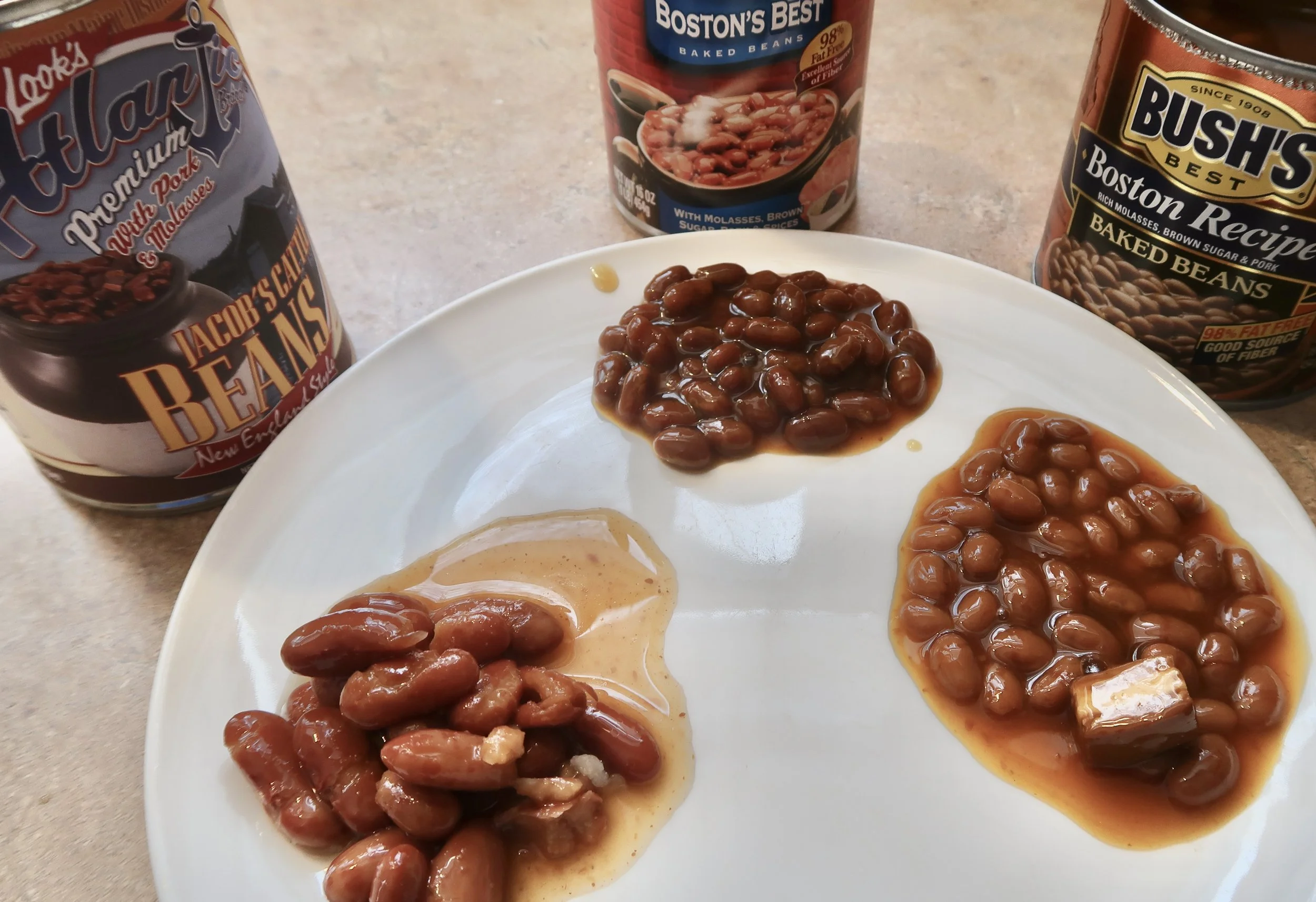Saturday Night Fare Meant Baked Beans and Steamed Brown Bread
When I lived near Boston, people laughed when I asked if they ate baked beans every Saturday night. They just shook their heads and changed the subject: “So what will we have for dinner—Greek or Chinese?”
After I returned to Aroostook County in northern Maine, I was no longer laughed at, but I got wistful looks from others when I recalled the tradition that put baked beans on my mother’s supper table 52 Saturdays of the year.
So why did many families from old New England insist on baked beans and brown bread every Saturday night—summer and winter—canned, store-cooked, or home-baked?
Some New Englanders eat beans with red hot dogs
Long ago, the Native Americans pit-cooked their dried beans in maple sugar with bear fat. The cooking involved digging a hole in the ground and placing heated stones in the bottom to cook the food slowly. Along with the beans, they made bread from corn meal.
Corn muffins
Early settlers from the British Isles substituted molasses for the maple syrup and salt pork for the bear fat, but kept the tradition of slow cooking the beans. They added wheat and rye flours, buttermilk, and molasses to the corn meal to produce steamed brown bread.
Puritans observed the Sabbath from sundown Saturday to the same time on Sunday, and no one did extra work beyond the necessary house and barn chores. The baked bean tradition created more of a break from the week’s labor. Religious families soaked several cups of dried beans Friday night and baked them—while steaming the bread—all day Saturday for the evening meal. Leftovers provided breakfast and lunch on Sunday.
Dried beans and other legumes
Though not a church-goer, my grandfather followed that custom without even thinking. Born when northern Maine was still a frontier, Gramp always had hot beans for supper on Saturday and ate them cold for Sunday breakfast. His sister, who lived to be 90, had a passion for cold bean sandwiches and often took them to school.
In stores: Look’s Jacob’s Cattle Beans, left, B&M Beans (Pea beans), and Bush’s Beans (Navy)
Shopping late one Saturday morning, I lingered near the deli section where warm containers of Maine yellow-eyed beans and steamed-up bags of fresh bread seemed to beckon hungry customers. Later on, I stopped in front of a shelf of canned brown bread, just above the cans of baked beans.
A traditional bean pot
“Why,” I told myself, “if you get your act together, you could have all that made from scratch!” So home I went and scratch I did, until some days later my family feasted on hot Great Northern beans, steeped in molasses, and served with steaming brown bread.
If I had the garden space, I would plant enough bush beans for many a Saturday night meal. But buying dried beans in the store will do for now. And when I do take the time to bake beans and steam bread, the aromas just might attract some home-starved friends.
Part of the ingredients from my mother’s 1947 eighth edition of The Boston Cooking-School Cook Book by Fannie Merritt Farmer. Mom always used larger dried beans such as Great Northern, Jacob’s Cattle, Soldier, or a rare, local variety called Ashby. She mixed in a pinch or two of powdered ginger to help prevent flatulence and, in later years “to be more healthy,” she refrained from using a block of salt pork and substituted 1-2 tablespoons olive oil.
Mom mixed a teaspoon or so of vinegar into regular milk to “sour” it. She used a metal coffee can for the bread mold, secured the cover, and steamed it inside a large, covered pot on the kerosine side of her combination stove.







